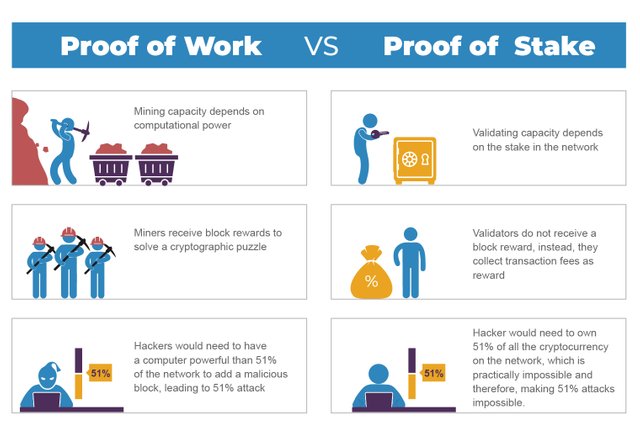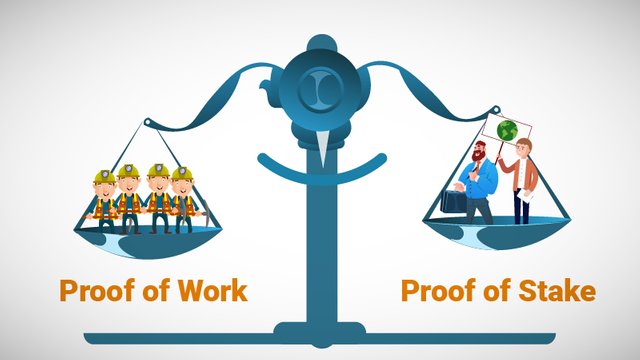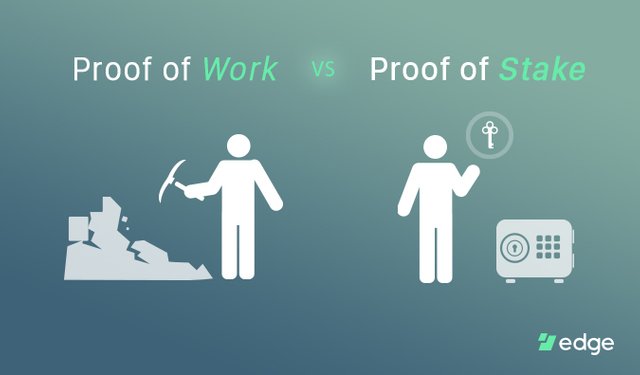Crypto Academy Season 3 Beginners course - Task 4: Different types of Consensus Mechanisms by @zeeshanakram
Hello steemians how are you. I hope you will be fine. Alhamdulilah I am also fine with the grace of Allah Almighty. I am very thankful to Dear Professor @sapwood for this interesting lecture about Different types of Consensus Mechanisms. So lets Discuss:
Question:
what is the difference between PoW and PoS? Advantages and Disadvantqages? Which one is better in scaling capacity? Examples?

source
POW and POS are two agreed-upon procedures that work under the auspices of computer technology.
Proof of work is a single method based on computer technology. It is also part of the blockchain that processes the miners' transactions and records them in the office. In POW, miners are randomly selected and limit the scaling range if there is not enough energy. The prisoner is more decentralized.
There is an unauthorized repository where all transactions occur And the miners approved the deal. Incorrect transactions are removed from the network and correct transactions are processed later.
But POS is different. This is the method where the validator is selected from the stack value. A weak horse is better than no horse at all. Unlike POW, POS is a centralized system. Attracts more stakeholders. Security is less than POW. For operations via subtraction, both algorithms are agreed upon.
Advantages and Disadvantages:
Advantages of Proof of Work:
1.Proof of a working model is always harder, which makes it more expensive to attack.
2.Because the proof of the working model mostly includes the results of the ventilation, it is called the decentralized model.
3.Proving the model gives miners the benefits of block rewards as well as the transaction cost that raises it.
Disadvantages of Proof of Work:
1.The biggest disadvantage of proof-of-work is that it consumes a lot of energy. It often entails environmental concerns.
2.Proof of work is much less than proof of stock.
3.Another issue with business ethics is safety concerns. Good security is only guaranteed if a large network of miners compete for block rewards.
Advantages of Proof of Stake:
1.The biggest advantage of proving a stack mechanism is that its algorithm is energy efficient. Proof of stock only allows large numbers of participants on worker nodes as they are cheap and easy.
2.In stock proof, extraction power is attributed to the proportion of coins attributed to miners. It uses energy.
3.Proving a stock mechanism is much safer than proving a business model.
Disdvantages of Proof of Stake:
1.Previous the reward mechanism is a winner in terms of the amount of money, it is often said that proving the desired mechanism helps the wealthier richer, which is a disadvantage.
Evidence of an inferior mechanism allows it to be verified in several chains. The argument is that this could allow hackers to attack at twice the cost.
Which one is better in scaling Capacity? Examples?

source
If the blockchain network is large in terms of transactions and authentication, it expands.
POS is better in terms of scalability because it is more energy efficient and at the same time stakeholders can get better rewards. This system works with more energy on the central system. POS also has better scaling solutions. POS uses low energy technology and computing.
Coins like Dash, No, TEOS and Etherm have already announced their transition from POW to POS due to their features.
Thank you professor @sapwood for giving us great information about this lecture.

